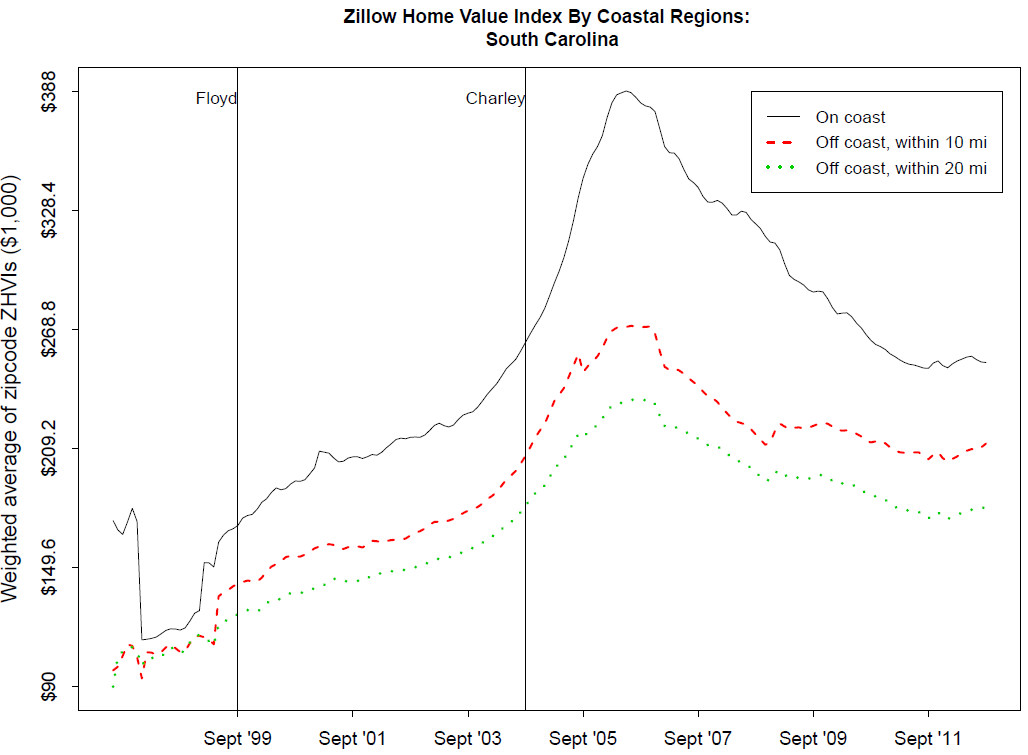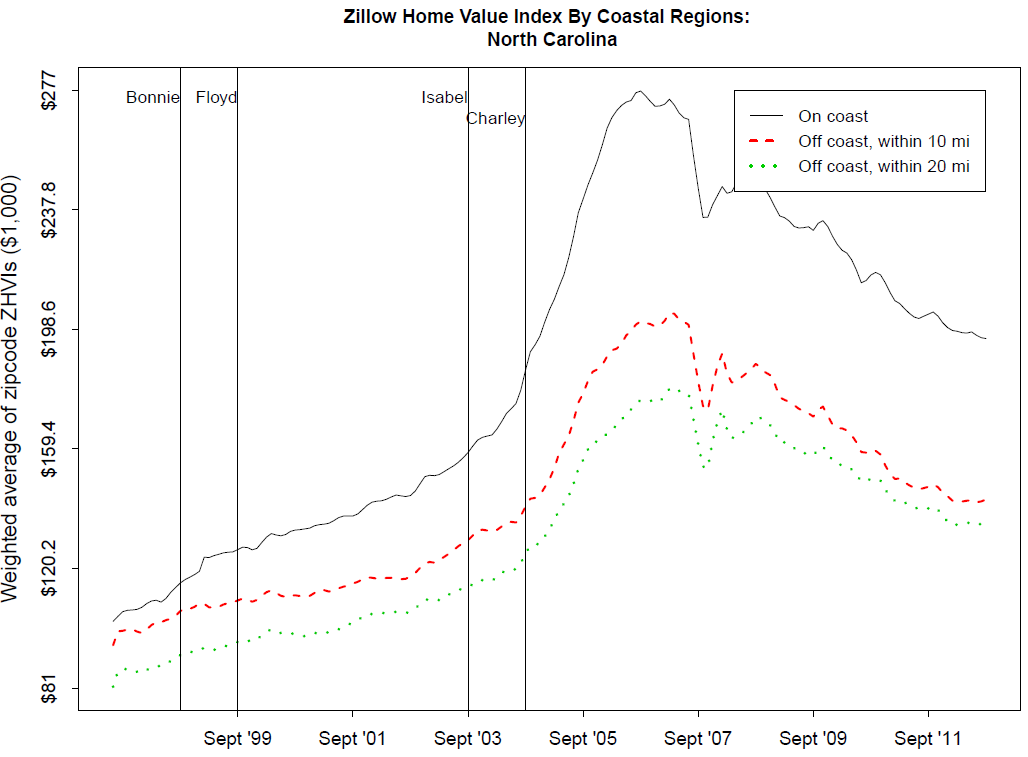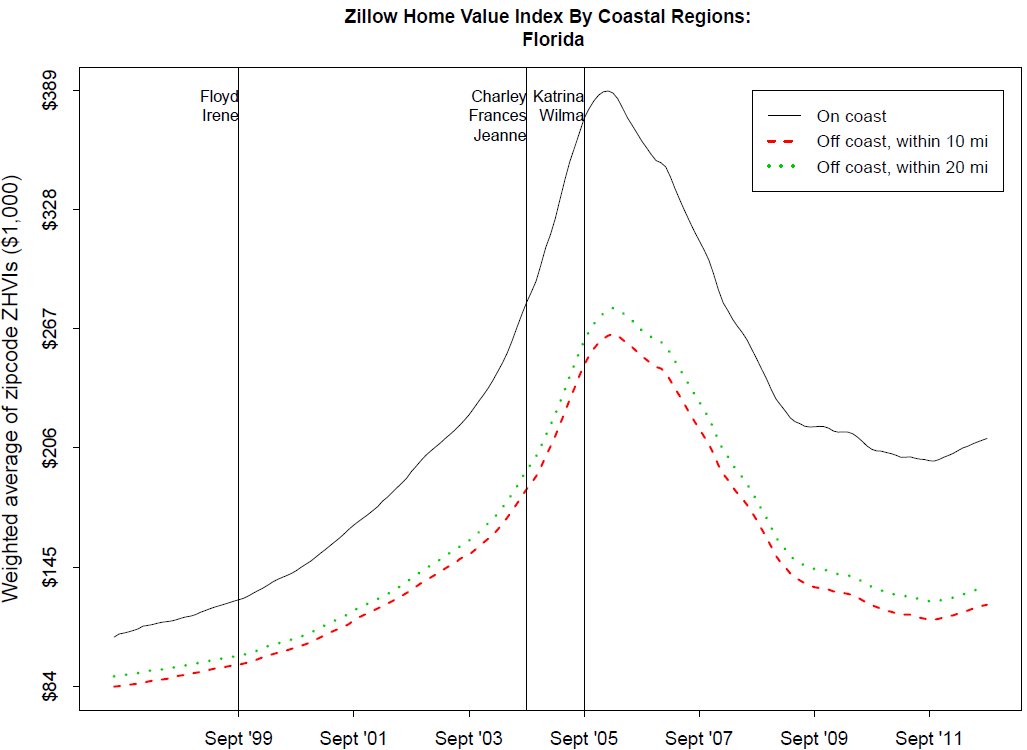The devastating aftermath of Hurricane Sandy raised many questions for the New Jersey and New York housing markets. Will residents of the battered neighborhoods remember the destructive potential of this storm and migrate to safer ground? Will people look on those areas with newfound worry and avoid storm zones like the plague? Or, alternatively, are people like moths to a flame when it comes to coastal living, quickly forgetting the trauma of the storms amidst the siren call of the oceanfront?
Well, if the coastal regions of the Carolinas and Florida – three states that have been heavily affected by hurricanes in the past – are any evidence, we can expect people to soon forget the unpleasantness of Hurricane Sandy, despite all the current protestations to the contrary.
We divided the zip codes within twenty miles of the coast in Florida, North Carolina, and South Carolina into three groups. The first group is comprised of zip codes that touch the coastline. The second are inland zip codes fully within 10 miles of the coast. The third group contains the remaining zip codes within 20 miles. For each of these groups, we calculated the average[1] Zillow Home Value Index, ZHVI, for each month since July of 1997.
A few things are readily apparent from these data. First, the premium for oceanfront is pretty large. Compared to properties within 10 miles of the coast, the median oceanfront property is valued 58% higher in Florida, 38% higher in North Carolina and 22% higher in South Carolina. Being closer to the coast still matters as shown by the fact that the median value of properties within 10 miles of the coast (but not directly on the coast) are 7% and 17% higher than properties located between 10 and 20 miles from the coast for North Carolina and South Carolina, respectively. Florida follows a different pattern with 5% higher housing values in the 10 to 20 mile range than the off-coastline 10-mile area.
Second, despite the fact that hurricanes have routinely ravaged these three states, coastal properties consistently maintain their premium over non-coastal properties, and there are no discernible dips or jumps in value after major storms. Moreover, coastal properties weathered the housing bubble’s burst better than non-coastal areas. Coastal regions have actually appreciated more than non-coastal areas over the past ten years: 1%, -0.4% and -0.6% appreciation over the past ten years for coastal regions, regions within 10 miles of the coast, and regions between 10 and 20 miles of the coast.
The bottom line: Homebuyers love coastal areas. The attraction is too strong to dampen interest simply because of a few hurricanes here and there. Evidently, people either quickly forget the potential dangers or simply place more weight on the upsides of coastal living relative to the downsides. We are confident that this will also hold true for New Jersey and New York in the wake of Hurricane Sandy.
[1] Each zip code ZHVI is weighted by the number the properties used to estimate the zip code level ZHVI.


